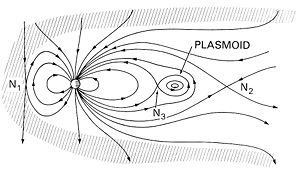A plasmid is a small, extrachromosomal DNA molecule within a cell that is physically separated from chromosomal DNA and can replicate independently. They are most commonly found as small circular, double-stranded DNA molecules in bacteria; however, plasmids are sometimes present in archaeaand eukaryotic organisms. In nature, plasmids often carry genes that benefit the survival of the organism and confer selective advantage such as antibiotic resistance. While chromosomes are large and contain all the essential genetic information for living under normal conditions, plasmids are usually very small and contain only additional genes that may be useful in certain situations or conditions. Artificial plasmids are widely used as vectors in molecular cloning, serving to drive the replication of recombinant DNA sequences within host organisms. In the laboratory, plasmids may be introduced into a cell via transformation. Synthetic plasmids are available for procurement over the internet.[1][2][3]
Plasmids are considered replicons, units of DNA capable of replicating autonomously within a suitable host. However, plasmids, like viruses, are not generally classified as life.[4] Plasmids are transmitted from one bacterium to another (even of another species) mostly through conjugation.[5] This host-to-host transfer of genetic material is one mechanism of horizontal gene transfer, and plasmids are considered part of the mobilome. Unlike viruses, which encase their genetic material in a protective protein coat called a capsid, plasmids are "naked" DNA and do not encode genes necessary to encase the genetic material for transfer to a new host; however, some classes of plasmids encode the conjugative "sex" pilus necessary for their own transfer. The size of the plasmid varies from 1 to over 200 kbp,[6] and the number of identical plasmids in a single cell can range anywhere from one to thousands under some circumstances.
https://en.wikipedia.org/wiki/Plasmid
A plasmoid is a coherent structure of plasma and magnetic fields. Plasmoids have been proposed to explain natural phenomena such as ball lightning,[1][2]magnetic bubbles in the magnetosphere,[3] and objects in cometary tails,[4] in the solar wind,[5][6] in the solar atmosphere,[7] and in the heliospheric current sheet. Plasmoids produced in the laboratory include field-reversed configurations, spheromaks, and in dense plasma focuses.
The word plasmoid was coined in 1956 by Winston H. Bostick (1916-1991) to mean a "plasma-magnetic entity":[8]
https://en.wikipedia.org/wiki/Plasmoid
above. psyclon nine clinik

No comments:
Post a Comment